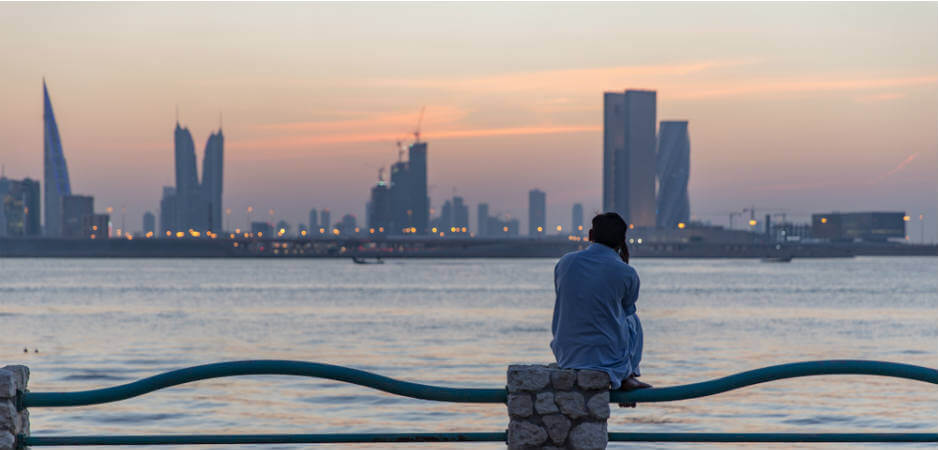With remittances from the Middle East in decline, India may face problems in the domestic labor market.
India is the leading recipient of international personal remittances, claiming 10.9% of global inflows. This is followed by China (10.6%) and the Philippines (5.4%), according to the latest data released by the World Bank for 2016. Total remittance inflow to India was $62 billion in 2016, down from $68 billion in 2015. A major fall (9.5%) is noted from Middle Eastern countries, whose share constitutes 55.7% ($35 billion) of India’s total remittances, as the average annual income per Indian migrant across the region decreased from $5,973 in 2015 to $5,407 in 2016.
Remittances are a major component in terms of contribution to GDP, especially for developing nations like India where domestic resources and national production are insufficient to provide full employment for the existing labor supply. The average wage rate is also lower in India compared to countries where remittances originate. Also, while India’s remittance inflows are similar to China’s, the share of remittances as a percentage of GDP is higher in India (2.5%) against China’s 0.6%. This difference reflects a higher dependency of India’s domestic economy on foreign remittances. Since the Middle East, and specifically the Gulf states, is a major source for India’s remittance inflow, a decline in earning in the region could adversely affect India’s employment and balance of payment.
The Middle East accommodates the highest number of Indian migrants around the world, with an estimated 8 million residing in the region, accounting for 19.7% of total global migrants in the Middle East and 53.7% of total Indian migrants globally. Over the last four years, the number of Indian workers to emigration check required (ECR) countries fell from 804,000 in 2014 to 391,000 in 2017. ECR, a protective measure for the non-matriculate Indian migrants to 17 countries across the Middle East and Southeast Asia, was adopted under the Migration Act 1983. Out of 17 ECR countries, 12 are in the Middle East. According to the RBI survey report for 2012, 42% of migrants to the Middle East were classified as unskilled labor.
A discrepancy in earnings is illustrative: While an average salary in India is $2,860 a year, in Qatar, Indian migrants earn $6,916 a year on average, followed by $5,713 in Kuwait, $5,544 in the United Arab Emirates and $5,112 in Saudi Arabia. Indians occupy various positions ranging from managerial roles to laborers. Around 10% are employed as doctors, engineers, chartered accountants and scientists, while a further 10% work in white-collar jobs such as storekeepers, clerks, secretaries and accountants in both government and private sectors. The majority, around 75-80%, makes up laborers and technicians working in construction and as home servants.
The ongoing economic downturn in the Gulf due to the fall in crude oil prices, internal political disturbances, the extra burden of taxes on expats (like the family-dependent tax in Saudi Arabia), and the growing inclination to recruit locals could account for the fall in remittances. Further, Indian workers in the Middle East report violations of contractual terms, adverse working conditions, poor wages and problems related to medical, insurance and compensation claims. As a result, many Indian workers have showed an interest in returning home. By February 2017, 3,015 workers in the Middle East had requested repatriation from Indian authorities (a vast majority of these from Saudi Arabia), while 594 Indians were in jail across the Middle East at this time last year.
Besides external pressures, Indian policies toward the ECR migrants heading to the Gulf are also a major causes for the decline, like the introduction of a tax on conversion of remittances, extra regularization of foreign recruiting markets and now the color coding of ECR passports. The color coding scheme was part of a reform to minimize the number of passport pages that contain unnecessary information. Since ECR status was included on a separate page, India’s government had the intention to remove this page by coloring the passport jacket orange to identify ECR emigrants. This could create a sense of inferiority among the ECR passport holders due to their poor economic and educational status and further decrease labor flow.
After protests by politicians and activists, the government rolled back its discriminatory initiative. Pointing out its repercussions, Oommen Chandy, former chief minister of Kerala, said: “If this becomes a reality, the moment an orange color passport holder lands in a foreign country, he will be treated with disdain, and it will have a telling impact on such people’s character and individuality. This should not happen at all.”
Shashi Tharoor, chairman of the Parliamentary Standing Committee on External Affairs, surmized that “the very premise of this decision — discriminating against the citizens of a country based on their economic status and educational qualifications — makes it inherently unfair.”
A decline of remittance inflows creates a major cause for concern due to adverse impact on India’s balance of payment and on the domestic employment adjustment. The government must take remedial measures to curb such decline and to prevent the discriminatory behavior against ECR migrants. Disputes related to wages and contract violations are also common in the Indian labor market, but the occurrence of such incidents among migrants across the Middle East should not be overstated to provide a reason for tightening recruitment rules and imposing excess regulations.
*[Updated: March 5, 2018]
The views expressed in this article are the author’s own and do not necessarily reflect Fair Observer’s editorial policy.
Photo Credit: Mike Bauder / Shutterstock.com
Support Fair Observer
We rely on your support for our independence, diversity and quality.
For more than 10 years, Fair Observer has been free, fair and independent. No billionaire owns us, no advertisers control us. We are a reader-supported nonprofit. Unlike many other publications, we keep our content free for readers regardless of where they live or whether they can afford to pay. We have no paywalls and no ads.
In the post-truth era of fake news, echo chambers and filter bubbles, we publish a plurality of perspectives from around the world. Anyone can publish with us, but everyone goes through a rigorous editorial process. So, you get fact-checked, well-reasoned content instead of noise.
We publish 2,500+ voices from 90+ countries. We also conduct education and training programs
on subjects ranging from digital media and journalism to writing and critical thinking. This
doesn’t come cheap. Servers, editors, trainers and web developers cost
money.
Please consider supporting us on a regular basis as a recurring donor or a
sustaining member.
Will you support FO’s journalism?
We rely on your support for our independence, diversity and quality.







